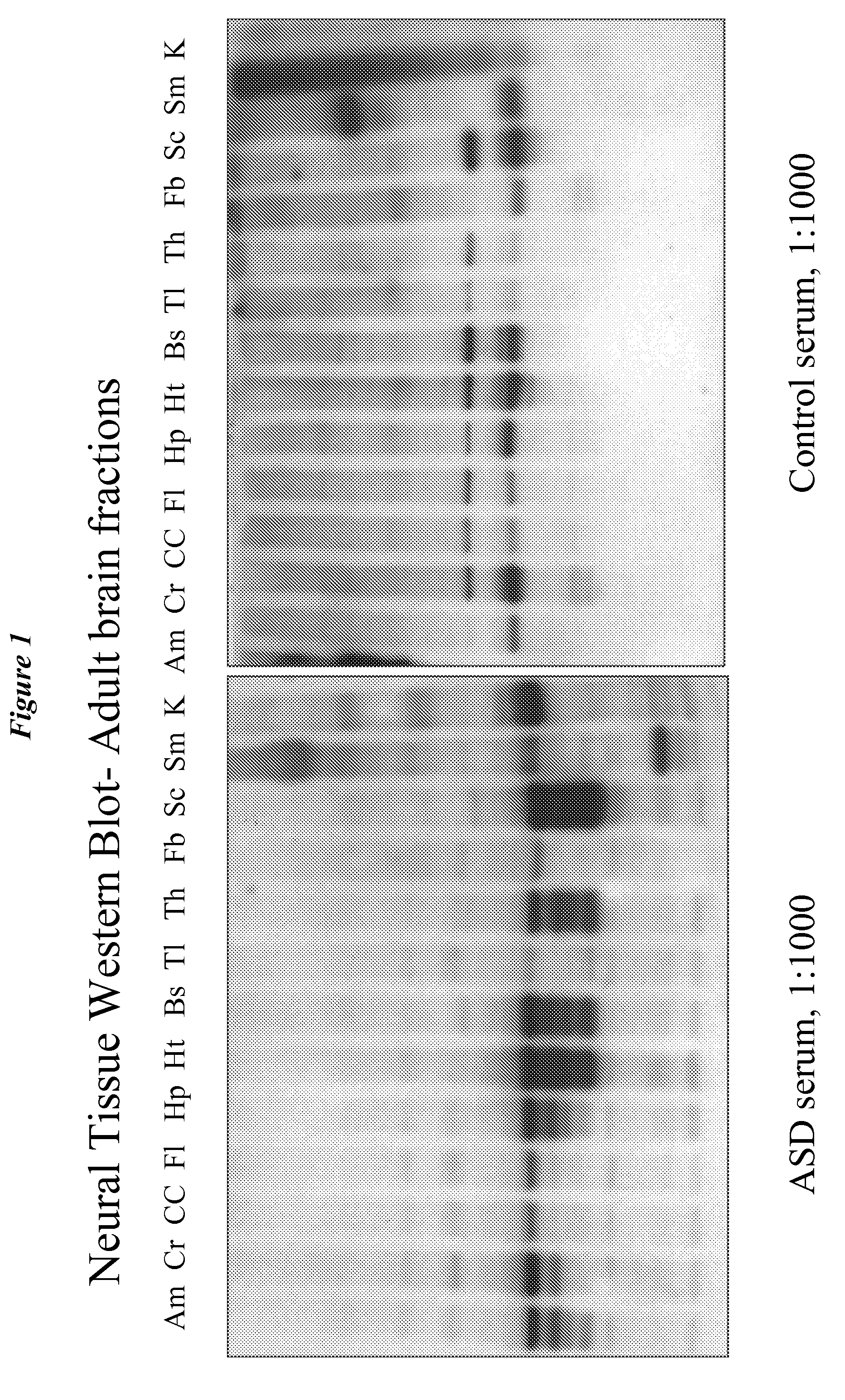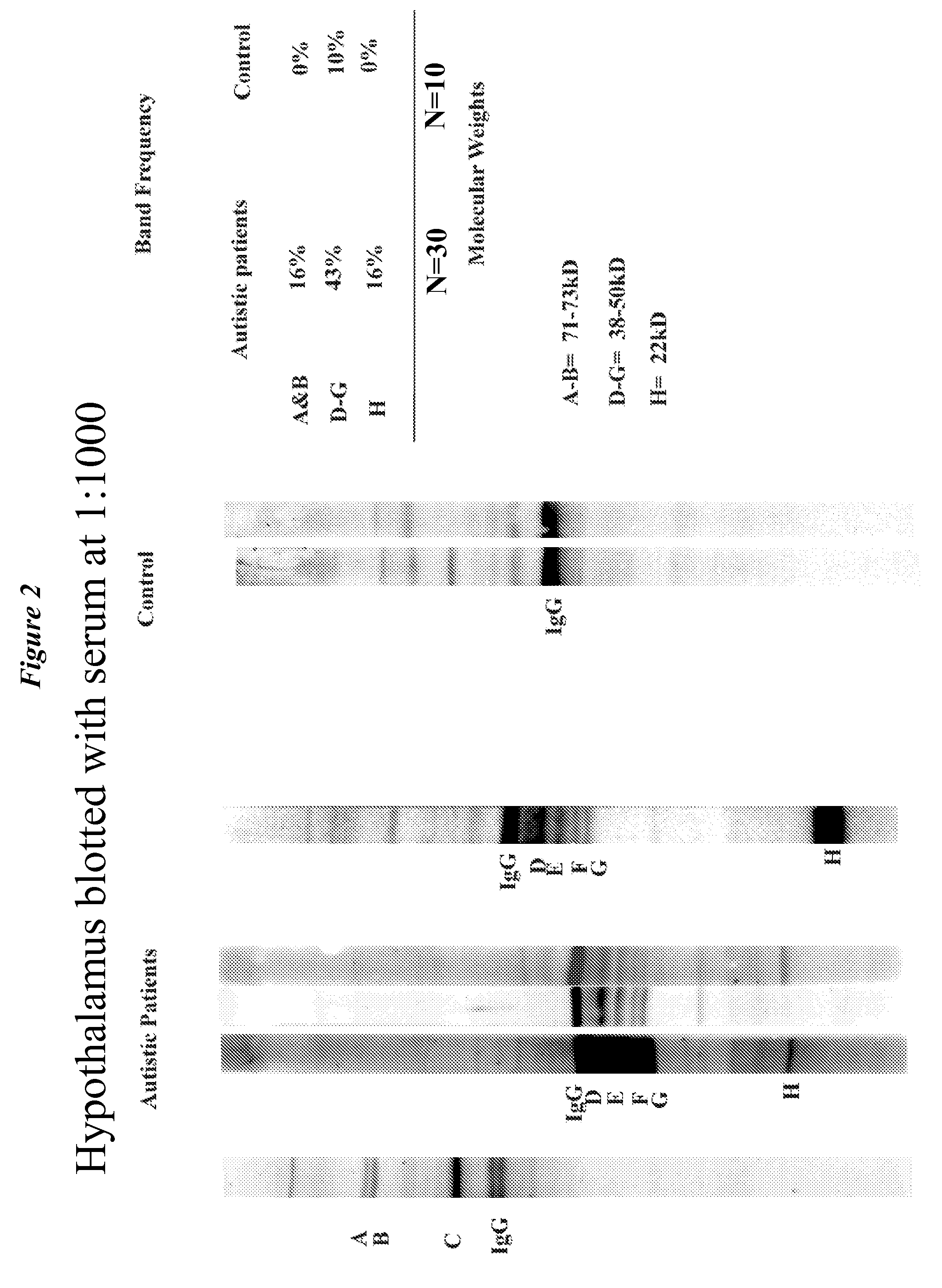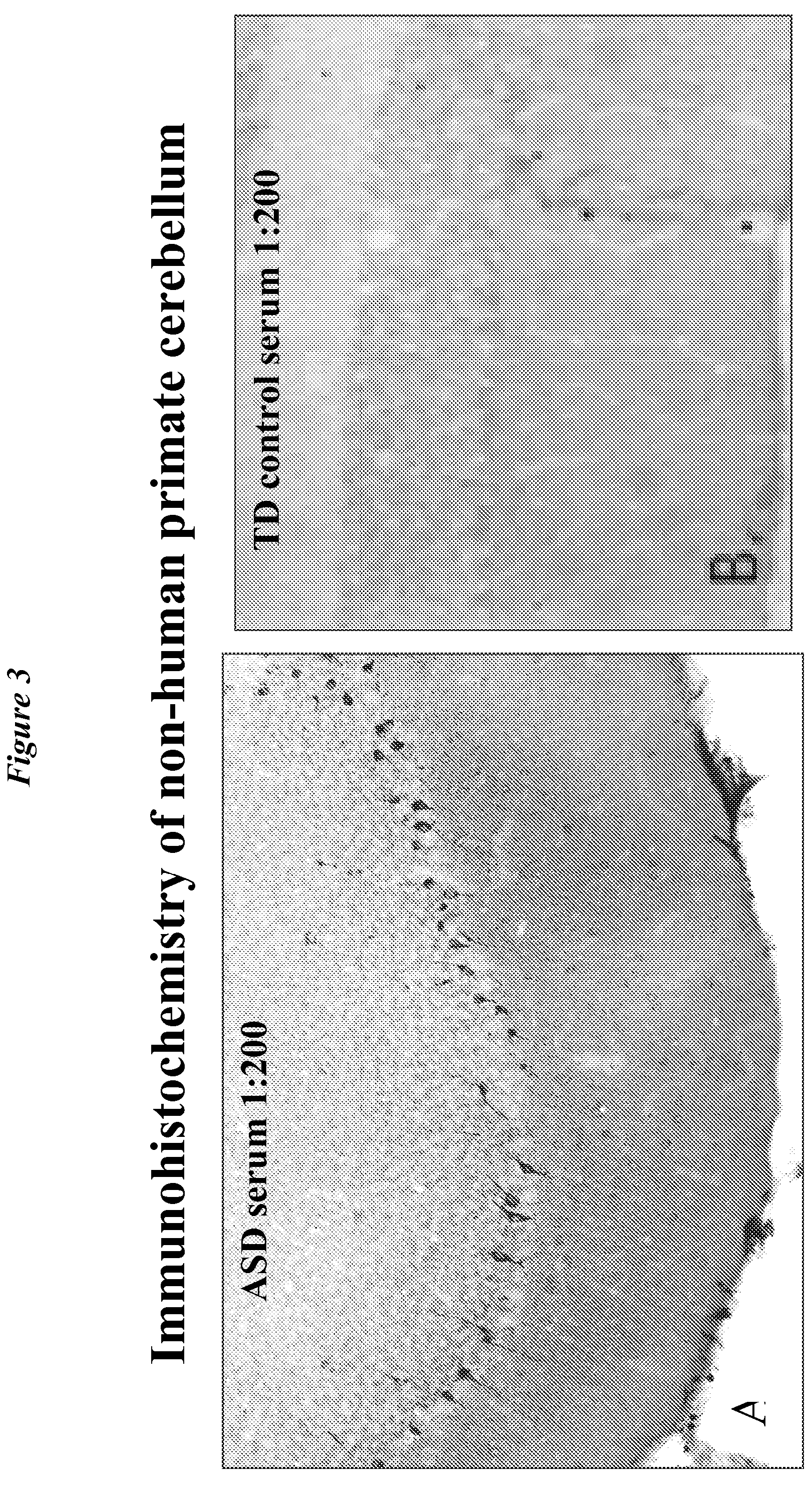Diagnostic methods for the detection of autism spectrum disorder
a diagnostic method and autism technology, applied in the direction of instruments, drug compositions, peptides, etc., can solve the problems of social development markedly delayed and deviant, language fails to appear or progress normally, and language does not appear or progress normally
- Summary
- Abstract
- Description
- Claims
- Application Information
AI Technical Summary
Benefits of technology
Problems solved by technology
Method used
Image
Examples
example 1
[0075]This example describes identifying autoantibodies against neural antigens and the local brain regions bound by such autoantibodies.
[0076]Serum or plasma from the patient with ASD is separated from the cell pellet and diluted 1:250, 1:500 and 1:1000. Human brain extracts (BD Biosciences / Clontech, Inc.) from various regions of the brain are separated by SDS-PAGE gel electrophoresis in a 12% gel under reducing conditions at a concentration of 15 μg / lane. The gel is blotted onto nitrocellulose overnight and washed in PBS. 4 mm strips are cut and placed into a tray with individual wells. The strips are blocked with 3% milk-PBS for 20 min. The diluted serum or plasma is then added for a 2 hour incubation, then the strips are washed 5× in PBS-tween. Following the washing procedure, the strips are incubated with a goat-anti-human IgG peroxidase conjugate for 1 hour, washed 5× with PBS-Tween and incubated with a chemiluminescence detection reagent for 5-15 min. The blots are imaged on ...
example 2
[0138]This example describes identifying maternal antibodies against fetal neural antigens and the local brain regions bound by such antibodies.
[0139]Serum or plasma from the mother is separated from the cell pellet and diluted 1:250, 1:500 and 1:1000. Fetal brain extract (BD Biosciences / Clontech, Inc.) is separated by SDS-PAGE gel electrophoresis in a 4-20% gradient gel under reducing conditions at a concentration of 15 μg / lane. The gel is blotted onto nitrocellulose overnight and washed in PBS. 4 mm strips are cut and placed into a tray with individual wells. The strips are blocked with 3% milk-PBS for 20 min. The diluted serum or plasma is then added for a 2 hour incubation, then the strips are washed 5× in PBS-tween. Following the washing procedure, the strips are incubated with a goat-anti-human IgG peroxidase conjugate for 1 hour, washed 5× with PBS-Tween and incubated with a chemiluminescence detection reagent for 5-15 min. The blots are imaged on an Alphalnnotech imager. The...
example 3
[0141]This example demonstrates the development of autistic-like behaviors in primate offspring exposed during gestation to human maternal IgG collected from sera of mothers of at least two children with an ASD.
Rationale and Study Design
[0142]The rhesus monkey was used as a model for the study of autism because it has several specific advantages over other animal model systems. In particular, the social repertoire of monkeys is much broader than that of rodents, making it useful for the analysis of normal and pathological human social behavior (Deaner, et al., Curr Biol (2003) 13:1609 and Gothard, et al., Anim Cogn (2004) 7:25). We have developed an extensive battery of behavioral tests aimed at exploring the neural basis of social behavior in rhesus monkeys. This battery involves testing during highly controlled social interactions using a comprehensive and well-defined ethogram (catalogue of species-typical behaviors) to quantitatively assess behavior. This testing battery is very...
PUM
| Property | Measurement | Unit |
|---|---|---|
| temperature | aaaaa | aaaaa |
| biological temperature | aaaaa | aaaaa |
| pH | aaaaa | aaaaa |
Abstract
Description
Claims
Application Information
 Login to View More
Login to View More - R&D
- Intellectual Property
- Life Sciences
- Materials
- Tech Scout
- Unparalleled Data Quality
- Higher Quality Content
- 60% Fewer Hallucinations
Browse by: Latest US Patents, China's latest patents, Technical Efficacy Thesaurus, Application Domain, Technology Topic, Popular Technical Reports.
© 2025 PatSnap. All rights reserved.Legal|Privacy policy|Modern Slavery Act Transparency Statement|Sitemap|About US| Contact US: help@patsnap.com



